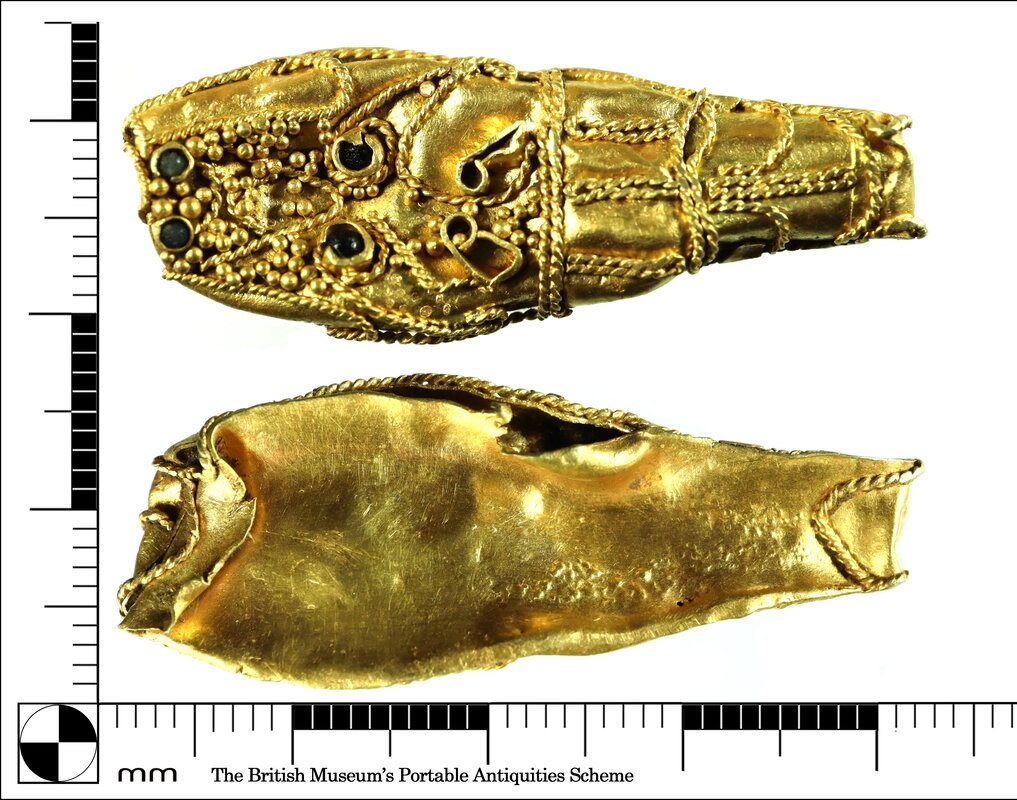The answer was yes so we planned our visit for Sunday 19th December 2021.
We recovered 69 Roman coins and over 4 kilo's of Roman pottery including tegulae and a piece of imbrex.
Thoughts are that there are at least 2 Roman buildings there.
After the Christmas and New Year celebrations (very low-key) and a spell of dry-ish weather, we made a visit to the number 2 field we had targetted.
On arrival (Sunday 16th January 2022) we were confronted with a field full of knee-length crop.
Our hearts sank a little, well a lot really so we thought we could see if we could rescue the situation somehow.
We managed to find a few areas where the crop hadn't grown too well so the opportunity to have a small reccy was taken.
The plan was to spend about an hour or so in this field then head over to the field where we had recovered the Roman coins and pottery in December.
I got a call on the radio from Robin that he had found something interesting so I walked over to have a look at this "interesting" find.
It was a piece of gold jewellry and I instantly thought that it looked Anglo-Saxon with a zoomorphic feature.
After taking a picture and uploading to a social media site it was confirmed that it was indeed Anglo-Saxon and was in fact an Aestel.
These were used to point out caligraphy in ancient manuscipts and this piece is dated to c. AD 850 - AD 999 so used during the reign of King Alfred.
Apparently, it was Alfred that had these commissioned and sent out with some of the newly translated religious texts from Latin to Anglo-Saxon.
The only other find of note was a Roman trumpet brooch which still had most of its pin intact.
With the searchable patches covered, we returned to field number 1 where more Roman coinage was unearthed..... and more pottery.




 RSS Feed
RSS Feed
